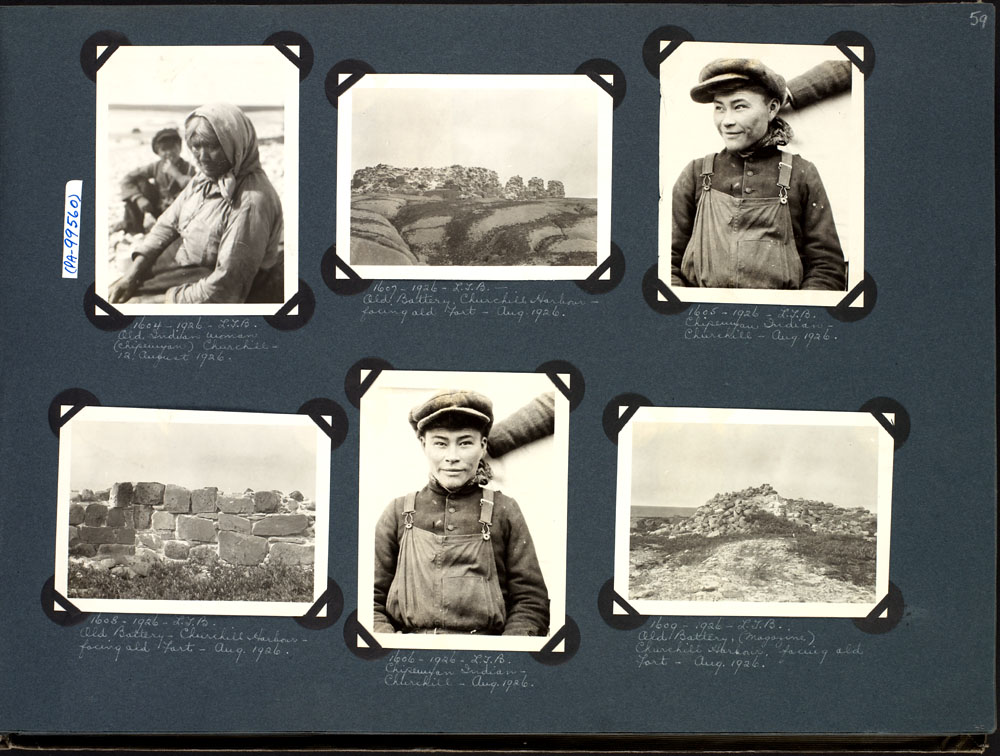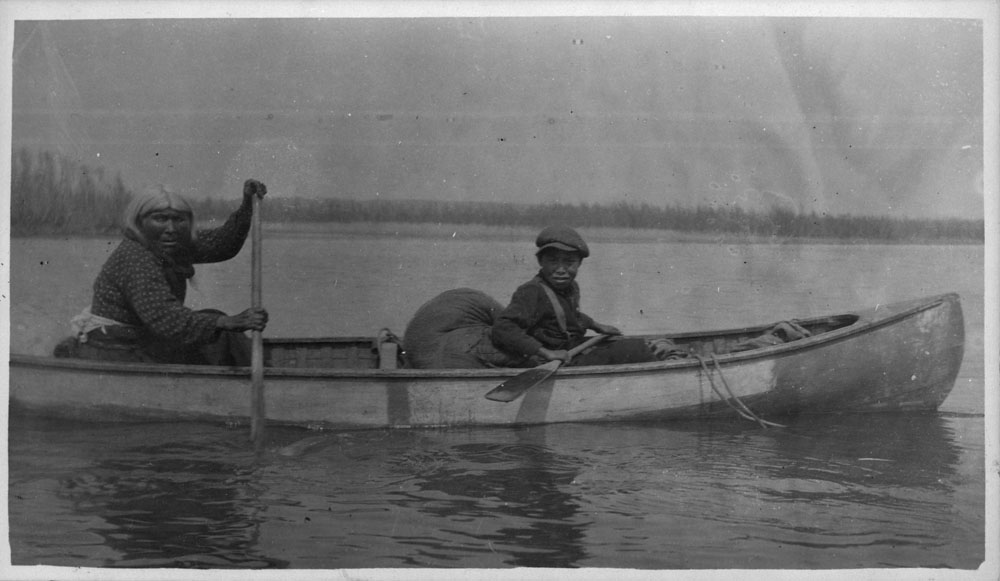|
Yellowknives
The Yellowknives, Yellow Knives, Copper Indians, Red Knives or T'atsaot'ine ( Dogrib: ''T'satsąot'ınę'') are indigenous peoples of Canada, one of the five main groups of the First Nations Dene who live in the Northwest Territories of Canada. The name, which is also the source for the later community of Yellowknife, derives from the colour of the tools made from copper deposits. History The historic Yellowknives lived north and northeast of the Great Slave Lake (''Tinde'e'' - "Great Lake") around the Yellowknife River and Yellowknife Bay (''Weledeh Cho'' - " Inconnu River") and northward along the Coppermine River, northeast to the Back River (''Thlewechodyeth'' or ''Thlew-ee-choh-desseth'' - "Great Fish River") and east to the Thelon River (or ''Akilinik''). They used the major rivers of their traditional land as routes for travel and trade as far east as Hudson Bay, where early European explorers such as Samuel Hearne encountered them in the 1770s. The Yellowknives hel ... [...More Info...] [...Related Items...] OR: [Wikipedia] [Google] [Baidu] |
Tłı̨chǫ
The Tłı̨chǫ (, ) people, sometimes spelled Tlicho and also known as the Dogrib, are a Dene First Nations people of the Athabaskan-speaking ethnolinguistic group living in the Northwest Territories of Canada. Name The name ''Dogrib'' is an English adaptation of their own name, (or ) – “Dog-Flank People”, referring to their fabled descent from a supernatural dog-man. Like their Dene neighbours they called themselves often simply ("person", "human") or ("People, i.e. Dene People"). The Tłı̨chǫ's land is known as (or , or ). On the 1682 Franquelin map, Dogrib was recorded as "Alimousp oiak" (from Cree , "Dog-Flanks"). Communities Tłı̨chǫ people have now six settlements or settlements with mostly of Tłı̨chǫ residents: Behchoko (formerly Rae-Edzo), Whatì (Lac la Martre), Gamèti (Rae Lakes), Wekweeti (Snare Lake), Dettah, and Ndilǫ (Rainbow Valley) (a subcommunity of Yellowknife, known by the Tłįchǫ as – "where the money is"). The or Do ... [...More Info...] [...Related Items...] OR: [Wikipedia] [Google] [Baidu] |
Akaitcho
Akaitcho (variants: Akaicho or Ekeicho; translation: "Big-Foot" or "Big-Feet"; meaning: "like a wolf with big paws, he can travel long distances over snow") (ca. 1786-1838) was a Copper Indian, and Chief of the Yellowknives. His territory included the region from the eastern portion of the Great Slave Lake, in the Northwest Territories, Canada, to the Coppermine River, in Nunavut. He was recruited to act as interpreter, guide, and hunter for John Franklin's first of three Arctic expeditions, the Coppermine Expedition of 1819–1822. Career Akaitcho was considered a man "of great penetration and shrewdness" and an aggressive leader. His tribe, who spoke their own dialect, consisted of the northwesternmost Chipewyan people. They traded meat supplies to the North West Company's Fort Providence trading post, situated on the East Arm of the Great Slave Lake. They were also known for pillaging, stealing women, and killing Dogrib and Hare Indians. Coppermine Expedition In 1820, whe ... [...More Info...] [...Related Items...] OR: [Wikipedia] [Google] [Baidu] |
Ndilǫ
Ndilǫ is a First Nations community in the North Slave Region of the Northwest Territories, Canada. The small Dene community is located on the edge of Yellowknife on the tip of Latham Island. It had a population of approximately 321 people in 2016.Ndilǫ – Statistical Profile at the GNWT Ndilǫ and are the communities of the . Ndilǫ is represented by the Yellowknives Dene First Nation (Ndilǫ) and are part of the [...More Info...] [...Related Items...] OR: [Wikipedia] [Google] [Baidu] |
Chipewyan
The Chipewyan ( , also called ''Denésoliné'' or ''Dënesųłı̨né'' or ''Dënë Sųłınë́'', meaning "the original/real people") are a Dene Indigenous Canadian people of the Athabaskan language family, whose ancestors are identified with the Taltheilei Shale archaeological tradition. They are part of the Northern Athabascan group of peoples, and come from what is now Western Canada. Terminology The term ''Chipewyan'' (ᒌᐘᔮᐣ) is a Cree exonym meaning ''pointed hides'', referring to the design of their parkas. The French-speaking missionaries to the northwest of the Red River Colony referred to the Chipewyan people as Montagnais in their documents written in French. Montagnais simply means "mountain people" or "highlanders" in French and has been applied to many unrelated nations across North America over time. For example the Neenolino Innu of northern Quebec are also called "Montagnais". Demographics Chipewyan peoples live in the region spanning the ... [...More Info...] [...Related Items...] OR: [Wikipedia] [Google] [Baidu] |
Dogrib Language
The Tlicho language, also known as Tłı̨chǫ Yatıì or the Dogrib language, is a Northern Athabaskan language spoken by the Tłı̨chǫ (Dogrib people) First Nations of the Canadian Northwest Territories. According to Statistics Canada in 2011, there were 2,080 people who speak Tłı̨chǫ Yatıì. As of 2016, 1,735 people speak the language. Tłıchǫ Yatıì is spoken by the Tłıchǫ, a Dene First Nations people that reside in the Northwest Territories of Canada. Tłı̨chǫ lands lie east of Mackenzie River (Deh Cho) between Great Slave Lake (Tıdeè) and Great Bear Lake (Sahtu) in the Northwest Territories. There are four primary communities that speak the language: Gamèti (formerly Rae Lakes), Behchokǫ̀ (formerly Rae-Edzo), Wekweètì (formerly Snare Lakes) and Whatì (formerly Lac La Martre). From a population number of about 800 during the mid-19th century to about 1,700 by the 1970s, the population has grown to about 2,080 as recorded by the 2011 Censu ... [...More Info...] [...Related Items...] OR: [Wikipedia] [Google] [Baidu] |
Dettah
Dettah, sometimes, incorrectly, as ''Detah'', is a First Nations community in the North Slave Region of the Northwest Territories, Canada. Located just southeast of the capital of Yellowknife, it is a drive from that city by ice road across the north arm of Great Slave Lake in winter or a drive via the Ingraham Trail, year-round. The name means 'Burnt Point' in the Dogrib language and refers to a traditional fishing camp used by the Dene for hundreds of years. Demographics In the 2021 Canadian census conducted by Statistics Canada, Dettah recorded a population of 192 living in 79 of its 85 total private dwellings, a change of from its 2016 population of 219. With a land area of , it had a population density of in 2021. Both it and Ndilǫ are the communities of the Yellowknives. Dettah is represented by the Yellowknives Dene First Nation (Dettah) and are part of the Akaitcho Territory Government. [...More Info...] [...Related Items...] OR: [Wikipedia] [Google] [Baidu] |
Tłı̨chǫ Language
The Tlicho language, also known as Tłı̨chǫ Yatıì or the Dogrib language, is a Northern Athabaskan language spoken by the Tłı̨chǫ (Dogrib people) First Nations of the Canadian Northwest Territories. According to Statistics Canada in 2011, there were 2,080 people who speak Tłı̨chǫ Yatıì. As of 2016, 1,735 people speak the language. Tłıchǫ Yatıì is spoken by the Tłıchǫ, a Dene First Nations people that reside in the Northwest Territories of Canada. Tłı̨chǫ lands lie east of Mackenzie River (Deh Cho) between Great Slave Lake (Tıdeè) and Great Bear Lake (Sahtu) in the Northwest Territories. There are four primary communities that speak the language: Gamèti (formerly Rae Lakes), Behchokǫ̀ (formerly Rae-Edzo), Wekweètì (formerly Snare Lakes) and Whatì (formerly Lac La Martre). From a population number of about 800 during the mid-19th century to about 1,700 by the 1970s, the population has grown to about 2,080 as recorded by the 2011 Census. However ... [...More Info...] [...Related Items...] OR: [Wikipedia] [Google] [Baidu] |
Yellowknife Bay
Yellowknife (; Dogrib: ) is the capital, largest community, and only city in the Northwest Territories, Canada. It is on the northern shore of Great Slave Lake, about south of the Arctic Circle, on the west side of Yellowknife Bay near the outlet of the Yellowknife River. Yellowknife and its surrounding water bodies were named after a local Dene tribe, who were known as the "Copper Indians" or "Yellowknife Indians", today incorporated as the Yellowknives Dene First Nation. They traded tools made from copper deposits near the Arctic Coast. Its population, which is ethnically mixed, was 19,569 per the 2016 Canadian Census. Of the eleven official languages of the Northwest Territories, five are spoken in significant numbers in Yellowknife: Dene Suline, Dogrib, South and North Slavey, English, and French. In the Dogrib language, the city is known as ''Sǫǫ̀mbak’è'' (, "where the money is"). Modern Yellowknives members can be found in the adjoining, primarily Indigenous ... [...More Info...] [...Related Items...] OR: [Wikipedia] [Google] [Baidu] |
Yellowknife
Yellowknife (; Dogrib: ) is the capital, largest community, and only city in the Northwest Territories, Canada. It is on the northern shore of Great Slave Lake, about south of the Arctic Circle, on the west side of Yellowknife Bay near the outlet of the Yellowknife River. Yellowknife and its surrounding water bodies were named after a local Dene tribe, who were known as the "Copper Indians" or "Yellowknife Indians", today incorporated as the Yellowknives Dene First Nation. They traded tools made from copper deposits near the Arctic Coast. Its population, which is ethnically mixed, was 19,569 per the 2016 Canadian Census. Of the eleven official languages of the Northwest Territories, five are spoken in significant numbers in Yellowknife: Dene Suline, Dogrib, South and North Slavey, English, and French. In the Dogrib language, the city is known as ''Sǫǫ̀mbak’è'' (, "where the money is"). Modern Yellowknives members can be found in the adjoining, primarily Indigenou ... [...More Info...] [...Related Items...] OR: [Wikipedia] [Google] [Baidu] |
Great Slave Lake
Great Slave Lake (french: Grand lac des Esclaves), known traditionally as Tıdeè in Tłı̨chǫ Yatıì (Dogrib), Tinde’e in Wıìlıìdeh Yatii / Tetsǫ́t’ıné Yatıé (Dogrib / Chipewyan), Tu Nedhé in Dëne Sųłıné Yatıé (Chipewyan), and Tucho in Dehcho Dene Zhatıé (Slavey), is the second-largest lake in the Northwest Territories of Canada (after Great Bear Lake), the deepest lake in North America at , and the tenth-largest lake in the world by area. It is long and wide. It covers an area of in the southern part of the territory. Its given volume ranges from to and up to making it the 10th or 12th largest by volume. The lake shares its name with the First Nations peoples of the Dene family called Slavey by their enemies the Cree. Towns situated on the lake include (clockwise from east) Łutselk'e, Fort Resolution, Hay River, Hay River Reserve, Behchokǫ̀, Yellowknife, Ndilǫ, and Dettah. The only community in the East Arm is Łutselk'e, a ... [...More Info...] [...Related Items...] OR: [Wikipedia] [Google] [Baidu] |
Dene
The Dene people () are an indigenous group of First Nations who inhabit the northern boreal and Arctic regions of Canada. The Dene speak Northern Athabaskan languages. ''Dene'' is the common Athabaskan word for "people". The term "Dene" has two usages. More commonly, it is used narrowly to refer to the Athabaskan speakers of the Northwest Territories and Nunavut in Canada, especially including the Chipewyan (Denesuline), Tlicho (''Dogrib''), Yellowknives (T'atsaot'ine), Slavey (Deh Gah Got'ine or Deh Cho), and Sahtu (the Eastern group in Jeff Leer's classification; part of the Northwestern Canada group in Keren Rice's classification). However, it is sometimes also used to refer to all Northern Athabaskan speakers, who are spread in a wide range all across Alaska and northern Canada. The Southern Athabaskan speakers, however, also refer to themselves by similar words: Diné (Navajo) and Indé (Apache). Location Dene are spread through a wide region. They live in t ... [...More Info...] [...Related Items...] OR: [Wikipedia] [Google] [Baidu] |
.jpg)



